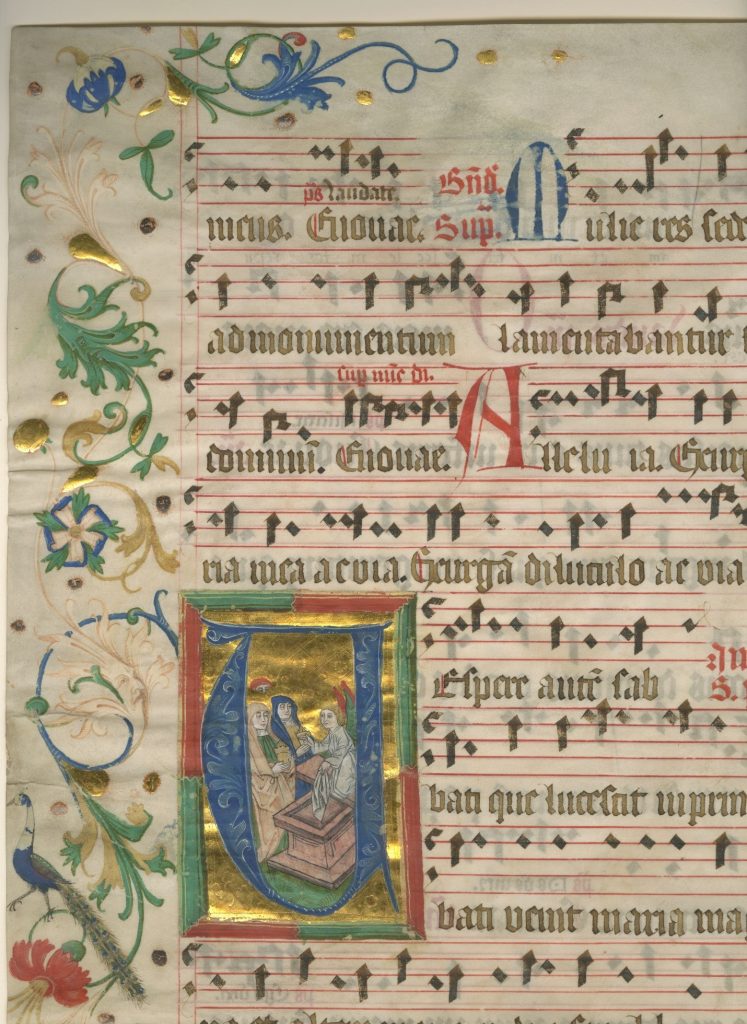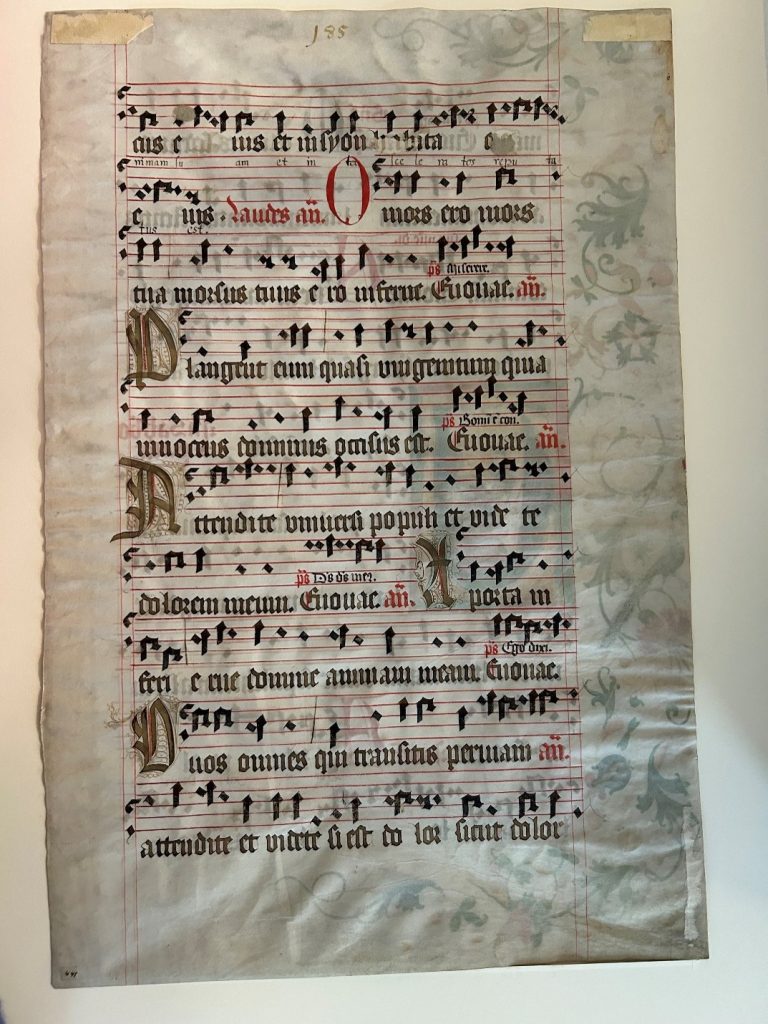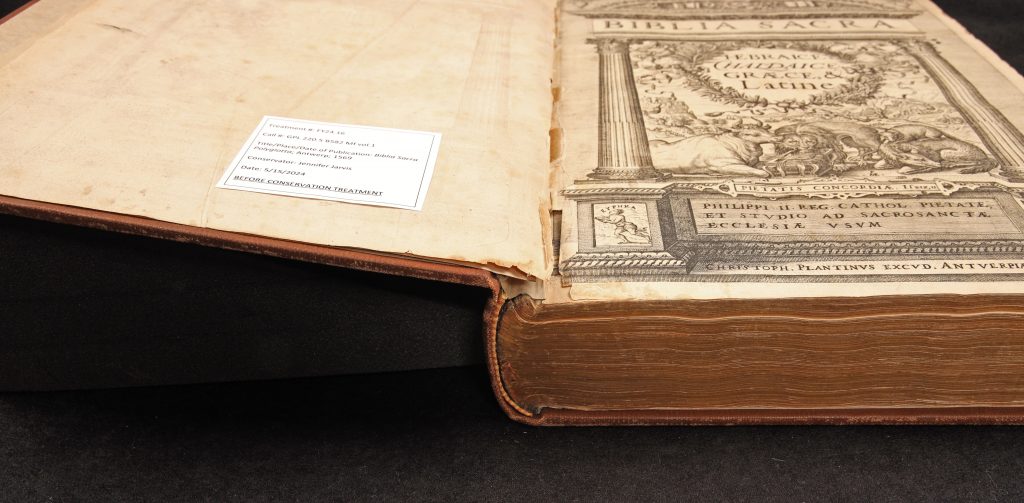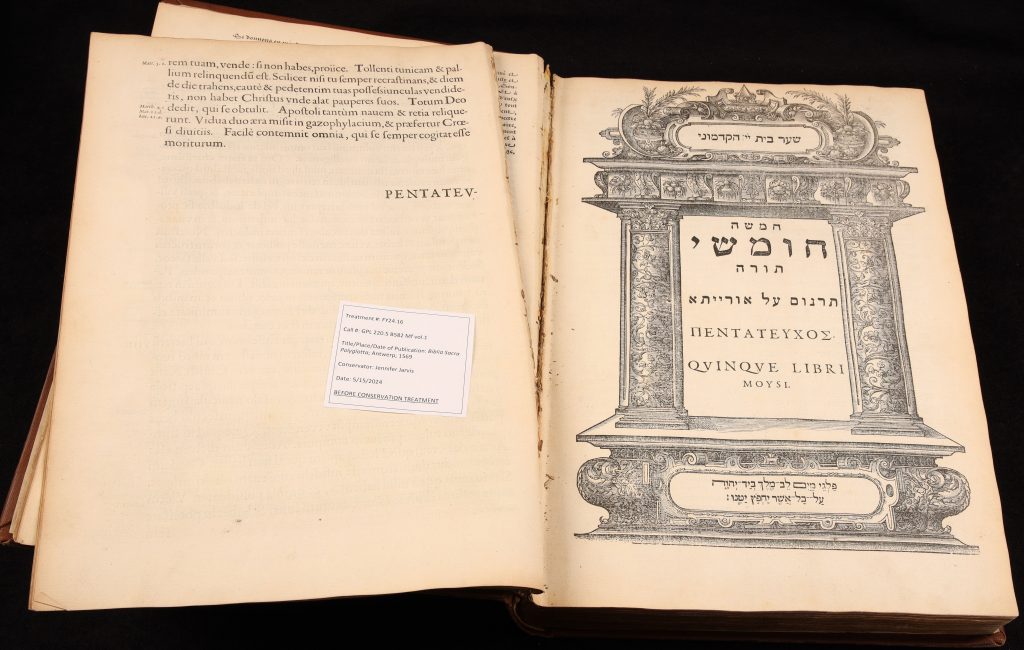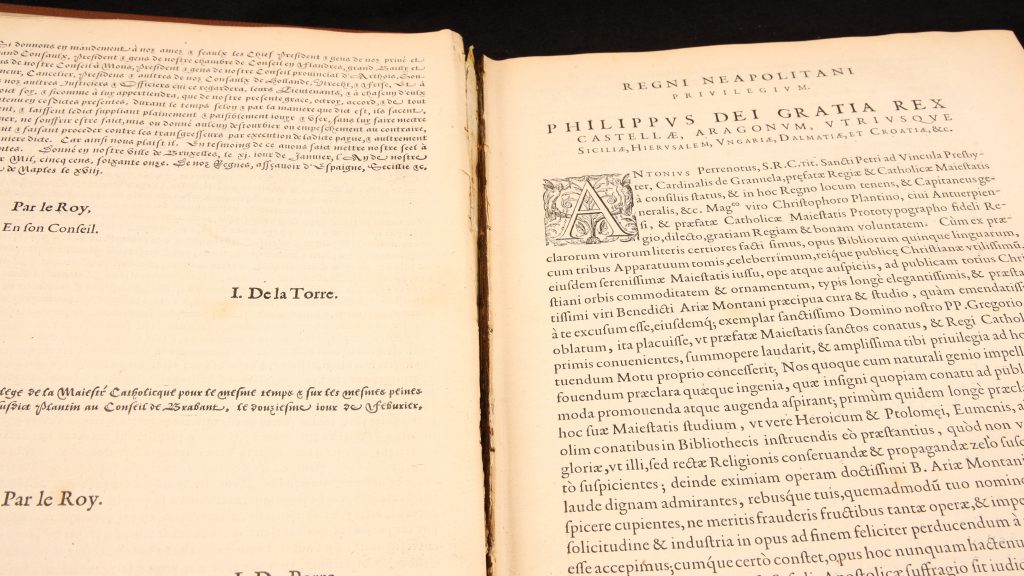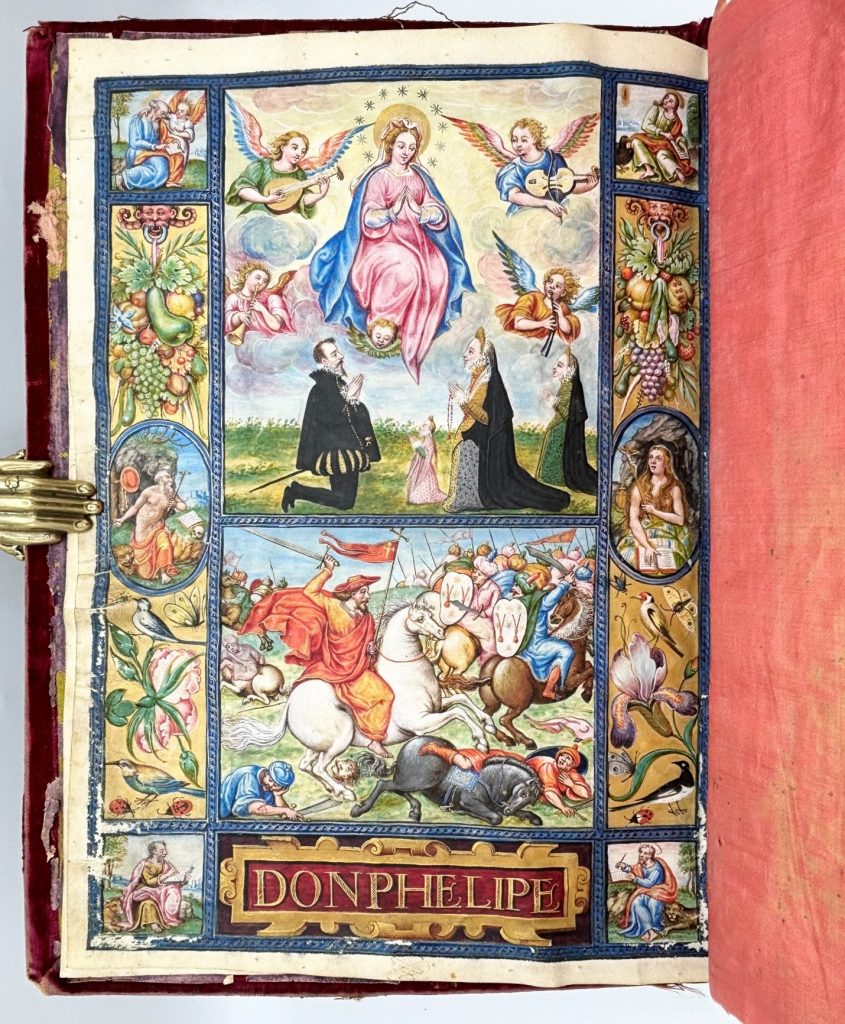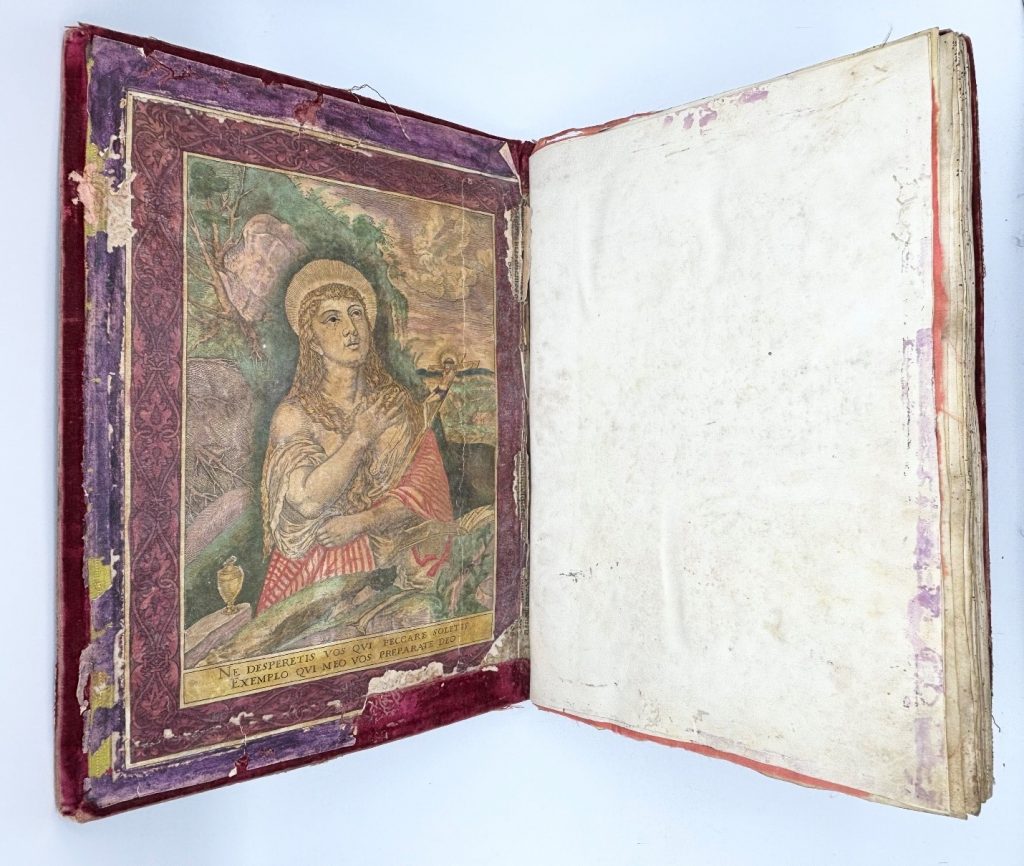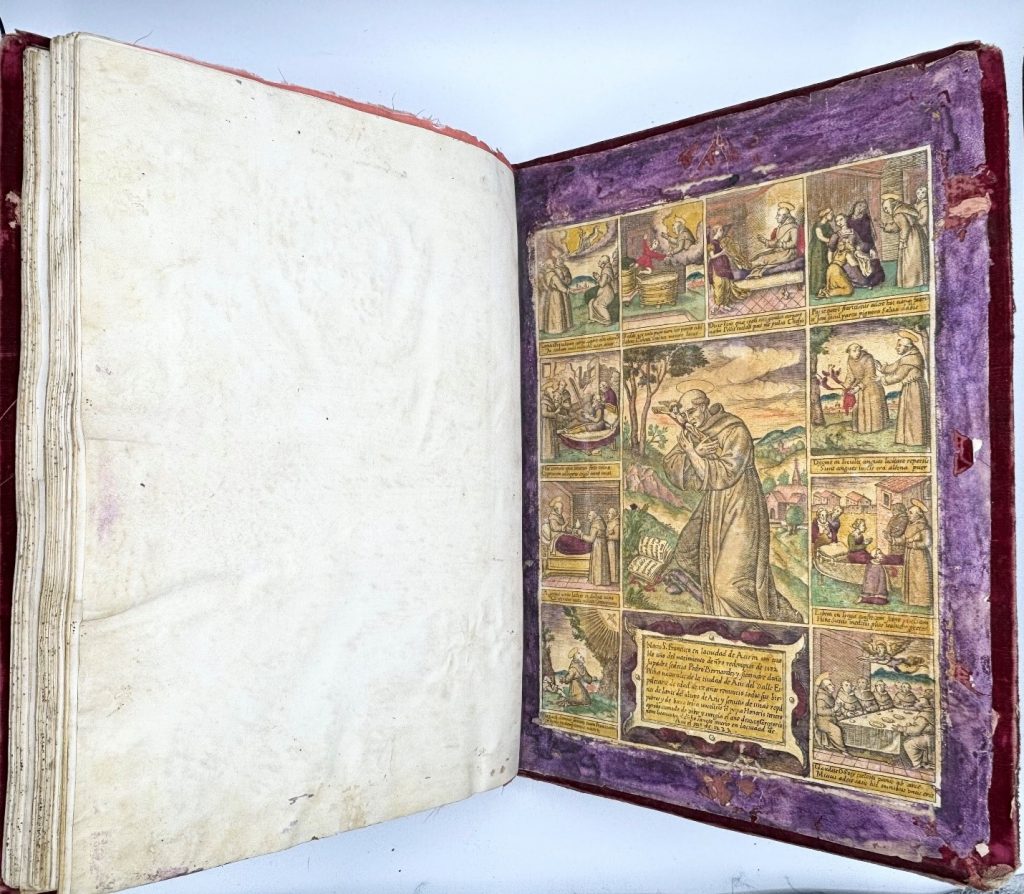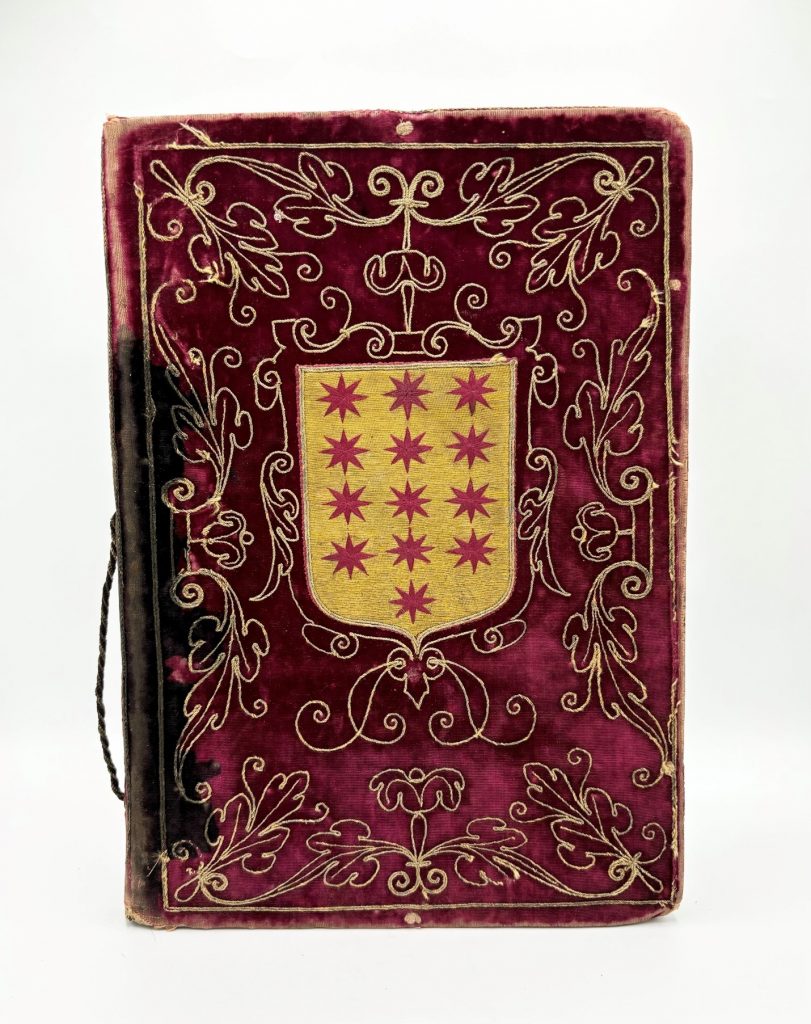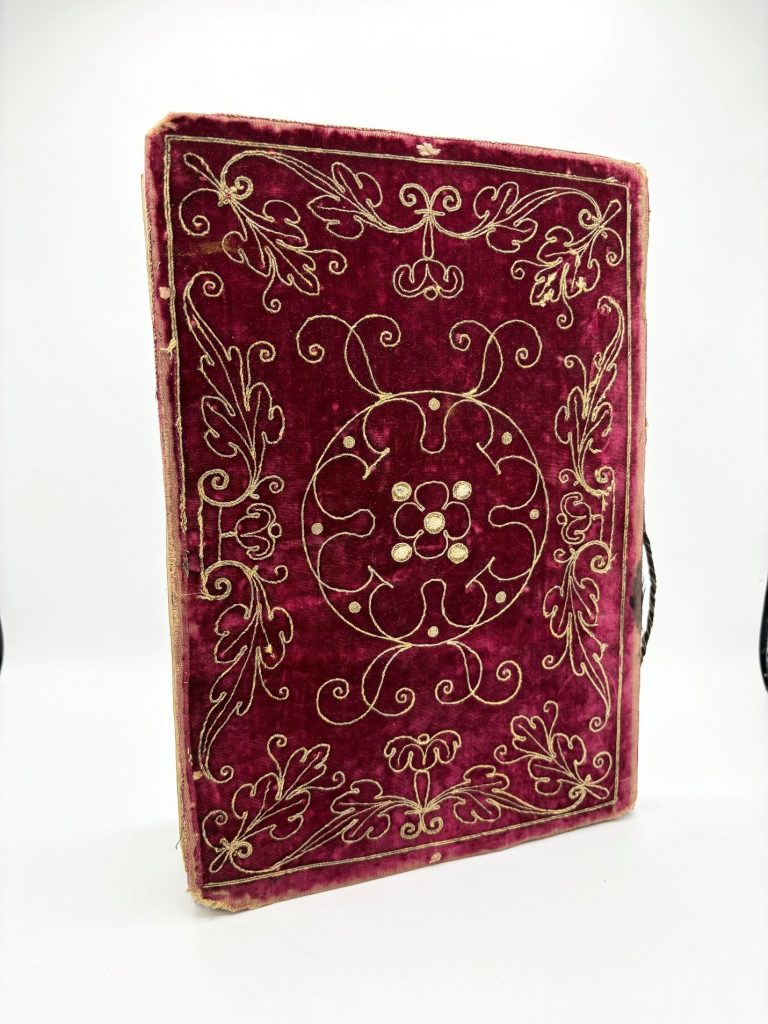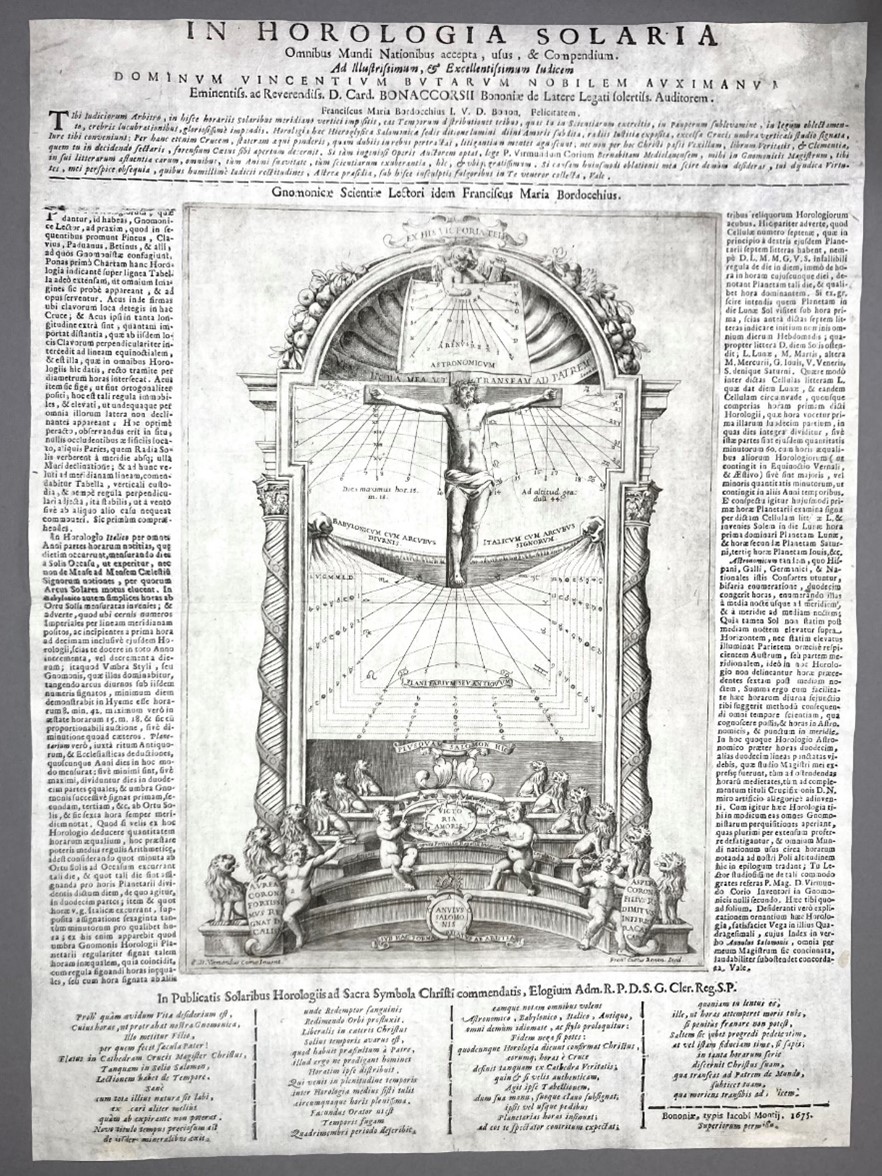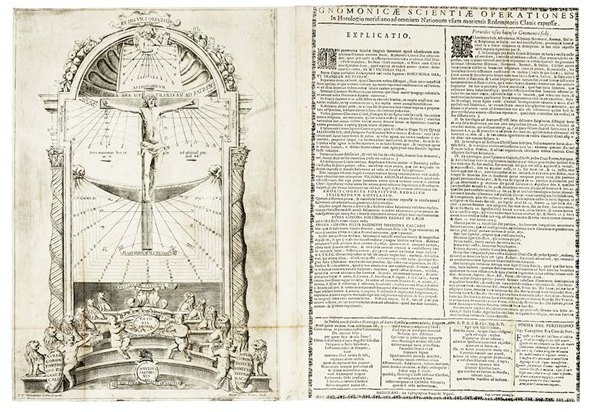 This antiphonal leaf contains a miniature depicting the dramatic encounter between the Three Marys and an angel standing near the empty tomb announcing the resurrection of Jesus Christ. The three Marys refer to Mary Magdalene; Mary, mother of James, and Mary Salome, as mentioned by the fifteenth-century Easter hymn O Filii et Filiae. However, throughout time and due to differences in the Gospels, tradition has identified one or more of them differently. Some named Mary, mother of Jesus as one of them, as well as Mary of Bethany, the sister of Lazarus who famously anointed Christ’s feet with her hair.
This antiphonal leaf contains a miniature depicting the dramatic encounter between the Three Marys and an angel standing near the empty tomb announcing the resurrection of Jesus Christ. The three Marys refer to Mary Magdalene; Mary, mother of James, and Mary Salome, as mentioned by the fifteenth-century Easter hymn O Filii et Filiae. However, throughout time and due to differences in the Gospels, tradition has identified one or more of them differently. Some named Mary, mother of Jesus as one of them, as well as Mary of Bethany, the sister of Lazarus who famously anointed Christ’s feet with her hair.
The three Marys are depicted in this late fifteenth-century German miniature bearing urns of myrrh and spices intended to anoint the body of Jesus following his death on the cross. This traditional representation earned the three Marys the title of the “myrrhbearers.”
The initial “V” forms the incipit for Vespere autem sabbati, an antiphon for the office of Vespers on Holy Saturday. Vespers traditionally anticipate or mark the beginning of next day’s feast, in this case Easter Sunday. The fact that the antiphon is followed by “alleluia,” which is forbidden to be sung from Ash Wednesday to Resurrection Sunday during Holy Week, firmly indicates that this is an Easter liturgy. The antiphon is taken from Matthew 28:1: Vespere autem sabbati quae lucescit in prima sabbati venit Maria Magdalena et altera Maria videre sepulcrum alleluia [And at the end of the Sabbath, when it began to dawn towards the first day of the week, came Mary Magdalene and the other Mary, to see the sepulchre. Alleluia].
The leaf contains ten lines of text in a gothic liturgical hand and ten musical staves ruled in five-lines with nagelschrift or hufnagel neumes (literally “horseshoe nails,” due to their visual resemblance). These neumes are particularly characteristic of medieval Germanic musical notation. Rubrics, ruling lines, and staves are penned in red, calligraphic capitals touched in red, with eight initials painted in red or blue (one includes a face peering out of a hood on the verso). The historiated initial is painted blue with leafy tracery in white; the miniature is set against a burnished gold ground tooled with floral motifs within a frame of green and red heightened with yellow, all supporting a broad border of twisting colored flowers and acanthus leaves (one leaf includes a face), gold bezants, and a peacock, a traditional Christian symbol of immortality.
The leaf contains other antiphons such as Mulieres sedentes ad monumentum (for Holy Saturday proper): Mulieres sedentes ad monumentum lamentabantur flentes dominum [The women sitting at the tomb mourned and wept for the Lord]. Another antiphon, Exurge gloria mea, is taken from Psalm 56:9 in the Latin Vulgate, which corresponds to Psalm 57:8 in most translations: Alleluia. Exurge gloria mea aevia. Exurgam diluculo aevia aevia [Alleluia. Awake, my glory! (Alleluia.) I will awaken the dawn (alleluia, alleluia).]
The final chant in this leaf is the long, elaborate, triple Alleluia, typically reserved for Easter. A later scribe rendered in a small, slender script the words Surrexit dominus vere [The Lord has truly risen,] a common Easter acclamation and greeting which also functions as an antiphon. This chant is followed by the 95th Psalm Venite, one of the so-called “Royal Psalms,” which praises God as king of his people and is here linked to Christ as king over all creation: “O come, let us sing unto the Lord: let us make a joyful noise to the rock of our salvation.”
At the end of the first three antiphons on the verso side of the leaf are musical mnemonics. These are, correspondingly: EOUAE, AEVIA, EOUAE. Each of these is matched with a sequence of notes, which function as shorthands for the common endings of chants. “EOUAE” corresponds to the vowels of the Gloria patri, and “AEVIA” are the vowels for alleluia.
In the miniature, the third Mary is obscured behind the gilded halos of the other two, peering behind them. This is a trend characteristic of late medieval Christian art, which renders halos as physical objects within a painted scene. This oftentimes leads to the amusing effect of saints’ faces peering behind the obstructive halos of those rendered in the foreground. This is taken to dramatic heights in works such as the contemporaneous Hours of Louis de Laval (c. 1480s), where a miniature corresponding to prayers for the feast of All Saints shows a multitude of saints present in the scene—most of them appearing merely as the rims of their halos in the background. Even when these saints’ backs are turned, the viewer is unable to see the back of the head as the dish-like halo stands in between.
The verso side of the leaf contains antiphons for Lauds on Holy Saturday. It is only embellished with rubricated instructions and a sole painted red capital, signaling the start of the office’s chants. The rest of the initials are executed in large calligraphic capitals touched with red and decorated with black penwork.
J.J. Lopez Haddad
PhD Candidate in History, Krieger School of Arts & Sciences
2024-25 Stern Center Curatorial Fellow, Sheridan Libraries & University Museums

